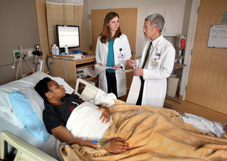Moving toward patient-centered care
Practice not currently considering the patient-centered medical home model can still position themselves for an eventual transition if and when the idea comes of age.
The patient-centered medical home (PCMH) is becoming better known, but what does it all mean? A PCMH is a team-based model of care led by a physician who provides continuous and coordinated care to maximize health outcomes. The PCMH practice provides for all of a patient's health care needs or appropriately arranges care with other qualified professionals, including preventive services, treatment of acute and chronic illness and help with end-of-life issues. Then, the model aligns payment to reward these activities.
Health care reform and the data from several PCMH pilot projects under way across the country will determine how many more physicians adopt this practice model. In the meantime, there is a lot that practices can do to position themselves for when the PCMH does come of age. While being officially recognized as a PCMH by the National Committee for Quality Assurance may not be a worthwhile pursuit at this point, particularly given inadequate reimbursement, adding some PCMH elements now can help practices provide high-quality clinical care, ensure patient access and safety, achieve high levels of patient satisfaction, and streamline processes to perform at optimum levels of efficiency.
Key features of a patient-centered practice include improvements in the following broad areas:
Patient-centered care and communication. Does your practice communicate effectively, including overcoming barriers to language, culture and learning, so that all patients have all the information they need to manage their own care?
Access and scheduling. If your patients do not have timely access to care, then they cannot improve.
Practice organization. Sometimes reorganizing the chart, fine-tuning office procedures or restructuring the care team can go a long way toward improving care.
Care coordination and transitions in care. Care transitions are an important source of medical errors and overuse of medical resources, but good care coordination between care levels and among clinicians improves outcomes for all patients.
Use of technology. Proper use of electronic technology can help make the daily operations of your practice more efficient, increase your compliance with regulatory agencies, and decrease your medical liability. Even practices with paper-based records can begin by using their practice management system effectively, as well as by using e-prescribing, secure e-mail, and patient registries.
Population management. Using clinical guidelines to help generate reminder letters, chart reminders, and standing orders and running reports from your practice management system, registry, electronic health record, or other database can keep patient care in synch with national recommendations as well as maximize your schedule.
Quality improvement and performance improvement. Today's physicians have received little training on how to measure performance against evidence-based guidelines.
ACP's Medical Home Builder is a self-assessment tool that helps practices identify areas for improvement and provides many tools and resources to help them move toward becoming a PCMH. For more information about the PCMH in general, go online .




